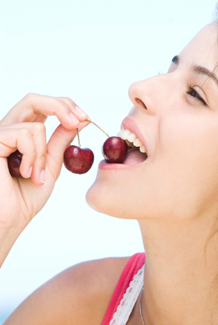 By Megan Zehnder for Care2.com
By Megan Zehnder for Care2.com
Fruit is no-doubt an important part of our diet. Full of fiber, antioxidants and other phytochemicals, fresh fruit is a great source of sustainable energy. Unlike foods with mostly simple carbohydrates and sugar (like hard candy, cake and donuts) whole fruit contains fiber and other nutrients, which allow the body to feel more full and to absorb the sugar slowly over time, leaving you with lasting energy.
The problem is many people today consume an excess of sugar, which causes inflammation, and can lead to a variety of diseases. (Check out dangers of excess sugar and 7 Tricks to Tame Your Sweet Tooth.)
When it comes to fruit, some choices are better than others. Since dried fruit and fruit juice contain a higher-concentrated sugar content, whole fresh fruit is generally a much better bet. Additionally, prioritizing low-sugar fruit can help keep your overall sugar consumption in check.
Here is a list of fruits that, in their approximate location on the spectrum, are lowest-to-highest in sugar content. Sugar and carb counts vary based on growing conditions, species and other factors.
Fruits Lowest in Sugar
- Lemon and Lime
- Rhubarb
- Raspberries
- Blackberries
- Cranberries
- Strawberries
- Casaba Melon
- Papaya
- Watermelon
- Peaches
- Nectarines
- Blueberries
- Cantaloupes
- Honeydew melons
- Apples
- Guavas
- Apricots (fresh, not dried)
- Grapefruit
Fruits with Medium-High Sugar Content
- Plums
- Oranges
- Kiwi
- Pears
- Pineapple
Fruits Highest in Sugar
- Tangerines
- Cherries
- Grapes
- Pomegranates
- Mangoes
- Figs
- Bananas
- Dried fruit (raisins, dried apricots, prunes)
Also Read:
Video: Understanding Sugar

